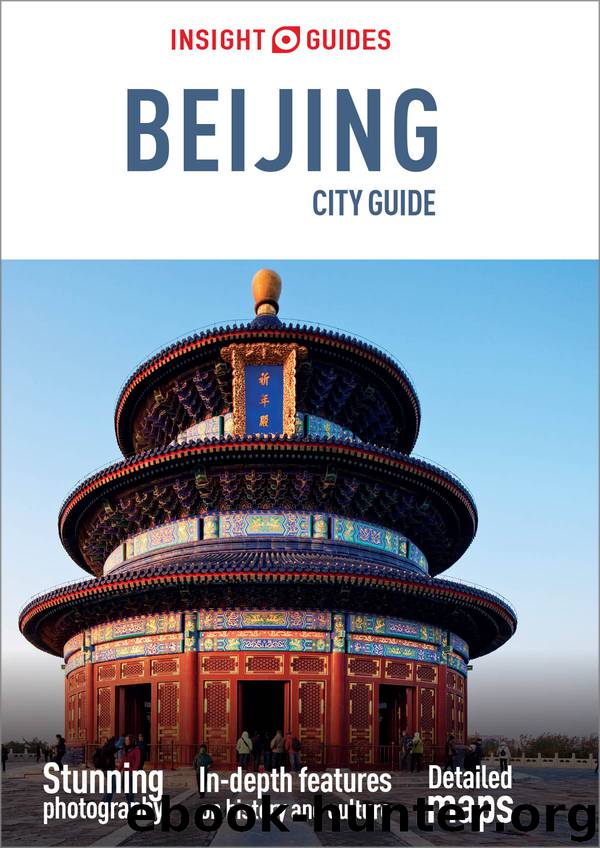Insight Guides City Guide Beijing (Travel Guide eBook) by Insight Guides

Author:Insight Guides
Language: eng
Format: epub
Tags: Travel, China
Publisher: Apa Publications
Published: 2019-11-20T16:00:00+00:00
Today Yingding Qiao (Silver Ingot Bridge) marks the boundary between Qianhai and Houhai lakes, but it used to represent the final end of China’s Grand Canal, which stretches some 1,800km (1,125 miles) south all the way to Hangzhou. Traders would bring grain, bolts of silk and tributary offerings for the emperor and exchange them there.
In the last years the attractions of the so-called “back lakes” have been increasingly capitalised on by entrepreneurs, who have opened innumerable restaurants, bars and cafés here. The most bustling thoroughfare is Lotus Lane & [map] (Hehua Shichang; 荷花市场), a pedestrian-only area on the southwestern shore of Qianhai Lake; the lane is lined with bars, restaurants and coffee houses. On sultry summer nights, it is packed with young people eager to enjoy the lake, the stars, the bars and each other. Another nightlife area is concentrated around dinky little Yinding Bridge * [map] (Silver Ingot Bridge; 银锭桥), where Houhai meets Qianhai Lake, and Nanluoguxiang (南锣鼓巷) – a long, renovated hutong. The canal area feeding into Houhai from the east has been renovated into a pleasant and oddly non-touristic park leading to Dianmen. The canal walk is lined with newly built courtyard houses which are being sold, of course, at astronomical prices for private residential ownership.
Former Residence of Guo Moruo
Nearby on Qianhai Xijie is the Former Residence of Guo Moruo ( [map] (Guo Moruo Guju; 郭沫若故居; Tue–Sun, 9am–4.30pm; charge), an influential figure in the rise of Communism in China. Guo was born in Sichuan Province in 1892, the son of a wealthy landlord. Following a spell in Japan, where he studied at Kyushu Imperial University, he returned to China in 1921 and became known as a respected author as well as a proponent of change, having been profoundly influenced by the Russian Revolution of 1917. The buildings are set in leafy grounds; inside, among the polished floors and old furniture, are photographs and quotations from the great man, but most are captioned in Chinese only.
Palace of Prince Gong
Address: 17 Qianhai Xijie
Tel: 8328-8149
Opening Hrs: Apr–Oct 8am–5pm, Nov–Mar 9am–4pm
Entrance Fee: charge
Transport: Pinganli subway station (line 4)
A short distance through the hutong to the west of the Yinding Bridge is the Palace of Prince Gong ‘ [map] (Gong Wang Fu; 恭王府), the world’s largest extant courtyard house and a very popular destination for tour groups. Prince Gong, the brother of Emperor Xian Feng, virtually ran the country during the minorities of the emperors Tongzhi and Guangxu, from 1861 to 1884. His home and its 5.7-hectare (14-acre) grounds, including lush gardens, are now occupied by the China Conservatory of Music. The historic structures in the complex include Beijing’s only preserved Qing-dynasty theatre. Here guests are served by women wearing traditional costumes of the period and treated to a sample of Beijing Opera.
Download
This site does not store any files on its server. We only index and link to content provided by other sites. Please contact the content providers to delete copyright contents if any and email us, we'll remove relevant links or contents immediately.
